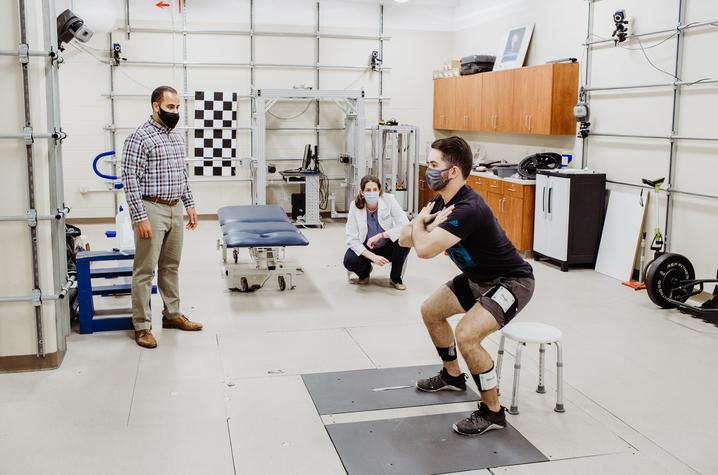New Study to Provide 1st In-Depth Look at Hip Pain in Patients With Marfan Syndrome
Researchers at the University of Kentucky have received a $100,000 grant from The Marfan Foundation to assess how patients with Marfan syndrome develop hip pain.
The study will be conducted by Mary Sheppard, an assistant professor of family medicine and surgery in the UK College of Medicine, and Michael Samaan, an assistant professor of biomechanics in the UK College of Education Department of Kinesiology and Health Promotion.
Marfan syndrome is a genetic condition that impacts the body’s connective tissue. It most frequently affects the heart, blood vessels, eyes and bones. Diagnostic features can include a dilated aorta; dislocated lens; long arms, legs and fingers; a curved spine; a chest that sinks in or sticks out; flat feet; and an abnormally shaped hip joint, among others.
The cardiovascular impacts of having Marfan syndrome can be significant, and have been the focus of the majority of prior research. The study at UK will be a first-look at the mechanisms involved in the onset of hip joint pain and cartilage degeneration in patients with Marfan syndrome.
Nearly half of patients with Marfan syndrome self-report hip joint pain yet it is highly unrecognized by clinicians.
“This combination of potentially weak hip joint musculature and abnormal joint shape can lead to high amounts of hip joint loading during walking, which may cause hip pain and cartilage breakdown,” Sheppard said.
The research team will take a closer look at how the muscle weakness associated with Marfan syndrome leads to problems with hip joint muscle function, muscle morphology and gait mechanics. The exact association of these factors with the onset of hip joint pain and cartilage degeneration is unknown and of particular interest to the researchers.
“A mechanistic assessment of the effects of Marfan syndrome on the muscles and hip is needed because, although patients with this syndrome have weak quadriceps and hamstring muscles, we do not know whether or not the muscles around the hip joint are affected by the syndrome. Our project will determine how hip joint muscle weakness, size, and amount of fat within the muscle affects how the hip joint moves during walking in patients with Marfan syndrome,” Samaan said.
Patients from Sheppard’s clinic who volunteer for the study will have an MRI taken and have their gait analyzed in the UK Biodynamics Laboratory. The strength, size and amount of fat within their hip abductors will be measured, as well as the corresponding effects on their hip joint movement patterns, hip joint pain and cartilage health.
“We will provide an understanding of how the hip joint functions during walking in patients with Marfan syndrome,” Samaan said. “Our hope is that this will allow clinicians to develop treatments that can improve hip muscle function, reduce hip joint pain and reduce the risk of developing hip osteoarthritis in people with Marfan syndrome.”
The researchers expect future studies will help create targeted muscle-based therapies to reduce hip pain in people with Marfan syndrome and related conditions.
The Marfan Foundation is a nonprofit organization that works to save lives and improve the quality of life for individuals and families with Marfan, Loeys-Dietz, VEDS and other genetic aortic and vascular conditions through research, education and support. The grant awarded to Sheppard and the UK team is part of the foundation’s 2020 research grant program. The total amount of research funded by this program in 2020 is $1.4 million. For more information, please visit www.marfan.org.

Marfan Syndrome Study_0.jpeg